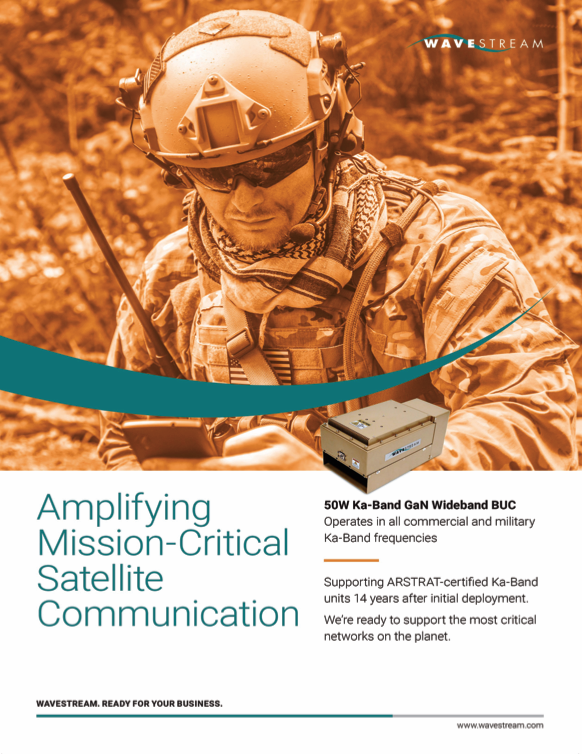The MILSATCOM industry is experiencing a formidable challenge, that being the crucial resiliency of networks for mission assurance. According to Euroconsult, in 2021, $6.6 billion were spent on government telecommunications programs, $3.6 billion of this amount was spent on secured satellite communications (SATCOM).
The need to guarantee the security of the network has led to an opportunity for new technologies, which are the key enabler and offer militaries a reliable environment for their communications. Due to the frenzied activity in hostile environments that are carried out by brigades, efficient communications has become essential.

The problems derived from RF interference (RFI), whether generated intentionally or not, are one of the main MILSATCOM. RFI hinders the reception of message to and from command and can cause irreparable miscommunication and that can lead to mission disasters. If RFI affects TT&C links needed for proper satellite control, as well as the disruption associated with payload links, this becomes even more of a potential concern for the military sector.
As the interference cancellation problems are affecting so much of what militaries need to accomplish, the need for new, anti-interference and anti- jamming techniques is high on the development list. The resulting technolgies must be fully effective, in real-time and in any situation, and fully comply with the militaries’ demands for service optimization.
RF Interferences are treated as a threat; however, the problem is that, due to the congested comms environment, there are intentional interferences that are extremely dangerous due to the disruption they cause, as well as unintentional interferences that have become a critical issue when military activity is located in a conflict area with coexisting, different networks.
Over the years, new solutions have been created that are able to protect waveforms by incurring extra bandwidth resources to offset potential interoperability problems. Some solutions offer physical, layer fingerprinting of emissions that are complete with operational information. Ad-hoc coordination of databases, or the development of sophisticated and expensive interference geolocation systems, continue to be developed.
Existing tool sets can resolve some interference types, but at the expense of technical resources and incurring possible performance degradation. The main problem with these interference techniques is the poor use of resources, not only at the monetary level, but also at the operational level.
When referring to defence critical missions, the battlespace stands out, rarely are warfighter resources dedicated to dealing with RF interferences and the maintenance of ground terminals.
To enhance the network for “protected communications” whose users manage critical infrastructures, government assets, communications for security forces and so on, as well as all satellites/payload control operators, the technologies that are required to protect the links effectively against unintentional or intentional ( jamming) interference to achieve maximum service availability and robustness must take into account both types of previously mentioned interferences, be able to handle equipment issues as well as offset operator errors.
Integrasys has now developed a new tool that is able to cancel interferences, such as 5G, congested networks, or jamming. The solution is CLEANRF — this is an elegant solution that negates costly interference conflicts, avoids cumbersome frequency coordination as well as elusive interference localization procedures, thereby maximizing the amount of usable, clean spectrum.
CLEANRF allows for the detection, identification, separation, and cancellation of RFI sources that affect the service signal being processed by receivers or transceivers that are operating with the satellite links. This offering enables satellite terminals to coexist with satellite and terrestrial interferences.
CLEANRF can effectively cancel a significant number of harmful interference sources on satellite-to-ground links for GEO, MEO and LEO satellites. Moreover, CLEANRF is the only technology capable of canceling 5G over C-band interferences, a problem that is on the rise in many developed countries and severely affecting the satellite industry. The CLEANRF solution enables secure and robust communications and protects network terminals from the most common, interference sources.
The MILSATCOM industry needs to count on reliable, real-time and efficient communications to achieve high performance when operating in conflicted and congested areas. Technology companies, such as INTEGRASYS, continue to innovate in cancellation technology for satellite signals, with the main aim being to contribute to ensuring high-quality communication that is secure, accurate and providing quick response.
www.integrasys-space.com


